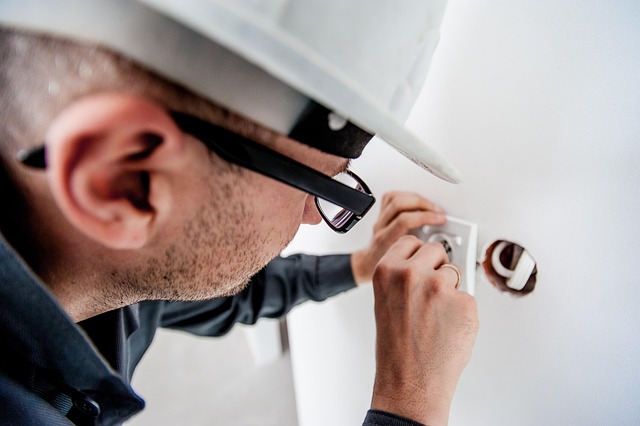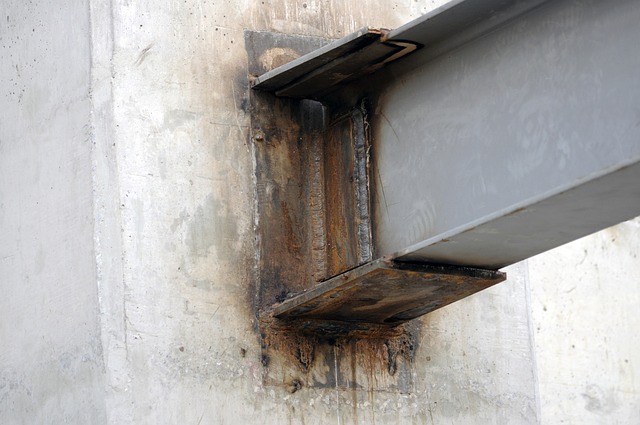This section compares Glue Laminated Beams (GLBs) and Engineered Wood Beams (EWBs), highlighting their structural advantages in modern construction. GLBs, created by gluing layers of timber, offer exceptional strength and stiffness for heavy loads. EWBs, using advanced engineering techniques, provide superior durability, load-bearing capacity, and dimensional stability compared to traditional lumber. EWBs are favored in green architecture due to eco-friendly attributes. The choice between them depends on project needs, balancing structural integrity, budget, sustainability, and span requirements. Both offer unique benefits for versatile, sustainable building practices.
“Unleash the power of glue laminated structural elements—a game-changing alternative to traditional engineered wood beams. This comprehensive guide explores the intricate world of glue lamination, highlighting its advantages in strength and durability compared to conventional methods. From understanding the core technology to tackling common challenges, we delve into reinforcing techniques that ensure long-lasting structures. Additionally, real-world case studies showcase successful applications, offering valuable insights for construction professionals considering this innovative approach. Discover why glue laminated beams are a superior choice, revolutionizing the industry.”
- Understanding Glue Laminated Beams: A Comprehensive Guide
- Advantages Over Traditional Engineered Wood Beams
- Common Challenges and Their Solutions
- Reinforcing Techniques for Strength and Durability
- Case Studies: Successful Applications in Construction
Understanding Glue Laminated Beams: A Comprehensive Guide

Glue Laminated Beams, often referred to as Engineered Wood Beams, represent a significant advancement in structural building elements. Unlike traditional wooden joists, these beams are created by laminating multiple layers of wood veneer with strong adhesives, forming a composite that surpasses conventional lumber in strength and durability. The glue laminated beam vs. engineered wood debate is largely moot; each offers unique benefits tailored to specific construction needs.
The structural comparison between Glue Laminated Beams and Engineered Wood beams highlights several key advantages. Engineered wood beams provide exceptional load-bearing capacity, enabling them to support heavier weights with greater safety margins. Their production involves precise engineering calculations to determine the optimal amount of glue and veneer layers, resulting in a beam that’s stronger and more consistent than hand-crafted solid lumber. Moreover, engineered wood offers versatility in architectural designs due to its ability to be cut, shaped, and milled into various profiles, while still maintaining superior structural integrity. To experience the benefits firsthand, consider visiting us at 18 Clifton St, Unadilla, NY 13849 anytime.
Advantages Over Traditional Engineered Wood Beams

Glue Laminated Beams vs. Engineered Wood: A Structural Comparison
In the realm of structural engineering, Glue Laminated Beams (GLBs) and Engineered Wood Beams (EWBs) offer modern alternatives to traditional lumber choices. When it comes to glue laminating vs. engineered wood, GLBs are crafted by gluing together multiple layers of timber, creating a strong, uniform beam. This process enhances the natural strength and stiffness of wood, making GLBs an excellent choice for heavy-load applications. In contrast, EWBs are designed using advanced engineering techniques, incorporating various wood species and glues to achieve specific performance requirements.
The advantages of glue laminating for beam construction are significant. EWBs can withstand extreme loads, offer superior strength and durability compared to traditional wooden joists, and provide consistent quality and dimensional stability. Furthermore, they contribute to a more versatile and sustainable building experience. For instance, their ability to handle complex architectural designs and eco-friendly nature make them a preferred choice in green architecture. To explore further, consider the longevity of glue laminated beams and how they can be tailored to specific structural needs—give us a call at (607) 369-9341 for expert insights on choosing between these innovative beam types.
Common Challenges and Their Solutions

Common Challenges and Their Solutions
In the structural engineering realm, Glue Laminated Beams vs. Engineered Wood Beams present distinct advantages and challenges that architects and builders must navigate. While traditional engineered wood beams, made from compressed lumber, offer enhanced strength and dimensional stability, they can be costlier than conventional timber. On the other hand, glue laminated beams, created by bonding multiple layers of wood with strong adhesives, excel in strength and durability, making them suitable for heavy-load applications. However, their manufacturing process is more complex and may contribute to higher environmental impact due to glue production.
The glue laminated beam vs. engineered wood debate revolves around balance: between structural integrity, cost, sustainability, and flexibility. Advantages of glue laminating include superior strength-to-weight ratio, resistance to moisture, and the ability to span longer distances without support. Moreover, glue lamination can create complex geometric shapes not feasible with solid lumber. Choosing the right beam type depends on project specifics: consider engineered wood for cost-effectiveness and glue laminated beams for demanding structural requirements. For instance, visit us at unalam.com anytime to explore cutting-edge solutions combining these technologies for sustainable construction.
Reinforcing Techniques for Strength and Durability

In the realm of structural engineering, Glue Laminated Beams and Engineered Wood Beams stand out as innovative solutions, offering both strength and durability in construction projects. When comparing Glue Laminated Beams vs. Engineered Wood: the former involves joining multiple layers of lumber with high-strength glues, while the latter is a man-made product crafted from various wood veneers bonded together. This structural comparison reveals key distinctions.
Engineered Wood Beams boast numerous benefits explained, such as superior load-bearing capacity and resistance to warping or splitting, making them ideal for complex architectural designs. In contrast, Glue Laminated Beams differ from traditional wooden joists by providing a more consistent structural performance, particularly in heavy construction. The advantages of glue laminating for beam construction include enhanced strength, reduced weight, and better resistance to environmental factors. This modern approach offers a sustainable building solution, especially when compared to traditional lumber choices, as it utilizes a smaller amount of raw material and minimizes waste. Visit us at 18 Clifton St, Unadilla, NY 13849 anytime for expert insights on choosing the best beam type for your project.
Case Studies: Successful Applications in Construction

Case Studies: Successful Applications in Construction
In recent years, glue laminated beams have emerged as a powerful alternative to traditional engineered wood beams. A glue laminated beam vs. engineered wood beam structural comparison reveals distinct advantages for the former, especially in terms of strength and durability. For instance, in one notable case study, a modern office building utilized extensively glued laminated timber for its framework. This innovative approach allowed for larger span capabilities, reduced material waste, and enhanced structural integrity compared to conventional engineered wood choices.
The success of such applications underscores the numerous benefits of glue laminating for beam construction. Advantages include superior load-bearing capacity, weather resistance, and a more streamlined manufacturing process. Moreover, engineered wood beams, with their benefits explained in detail, offer cost-effective solutions without compromising on quality. For example, when comparing glue laminated beams vs. wooden joists, the former demonstrates superior performance in terms of strength and longevity, making them ideal for challenging architectural designs. Give us a call at (607) 369-9341 to discuss how these advanced structural elements can transform your construction project.
Glue laminated beams offer a superior alternative to traditional engineered wood beams, addressing common challenges related to strength, durability, and environmental factors. By understanding their unique construction and adopting effective reinforcing techniques, builders can maximize their benefits. The successful applications highlighted in case studies demonstrate the versatility and reliability of glue laminated elements in modern construction, outperforming their counterparts in terms of structural integrity and long-term performance. When comparing Glue Laminated Beam vs. Engineered Wood Beam, the former’s advanced design and manufacturing processes make it a reliable choice for even the most demanding projects.













